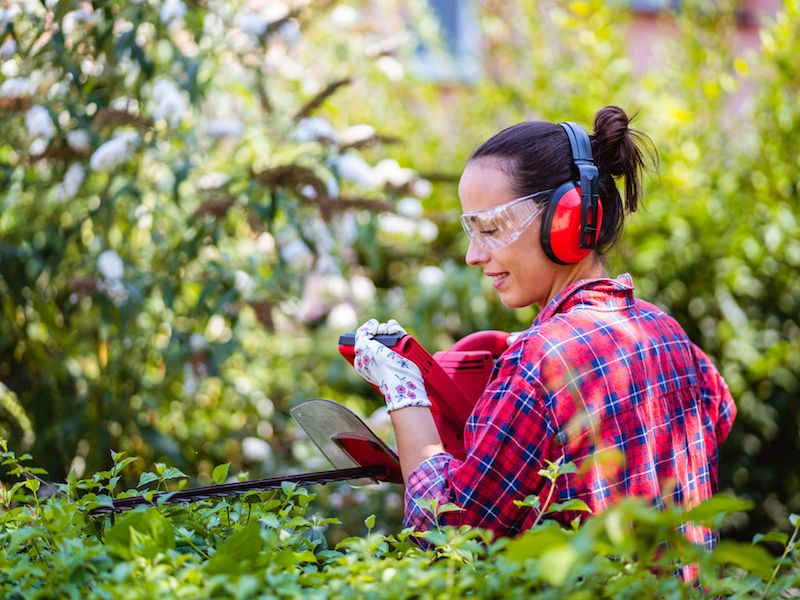
Eating right and safeguarding your hearing have some parallels. It’s difficult to know where to start even though it sounds like a good idea. This is particularly true if you don’t think your daily environment is very noisy and there aren’t any noticeable dangers to your ears. But your ears and senses can be stressed by everyday living, so doing these hearing protection tips can help safeguard your auditory acuity.
The more you can do to slow the impairment of your hearing, the longer you’ll be able to enjoy the sounds around you.
Tip 1: Wearable Hearing Protection
Using ear protection is the most practical and simple way to safeguard your ears. This means taking basic actions to reduce the amount of loud and damaging noises you’re subjected to.
For many people, this will mean wearing ear protection when it’s needed. Hearing protection generally comes in two basic forms:
- Ear Plugs, which are put in the ear canal.
- Ear Muffs, which are placed over the ears.
Neither form of hearing protection is inherently better than the other. Each type has its advantages. What’s essential is that you get some hearing protection that you feel comfortable with.
Tip 2: Be Aware When Sound Becomes Dangerous
But how can you tell when to use hearing protection? Noise that is painful is usually considered harmful. But much lower volumes of sound can harm your ears than you might realize. The sounds of traffic, for instance, are loud enough to begin damaging your hearing after just a couple of hours. An essential step in protecting your hearing, then, is recognizing when sound becomes harmful.
The following threshold is when sound becomes harmful:
- Over 100 dB: In this situation, you can injure your hearing very quickly. Anything over this threshold can injure your hearing in minutes or seconds. Rock concerts and jet engines, for example, can damage your hearing in about thirty seconds.
- 95-100 dB: This is about the noise level you’d expect from farm equipment or the typical volume of your earbuds. After about 15-20 minutes this volume of sound becomes dangerous.
- 85 decibels (dB): This level of sound is dangerous after about two hours of exposure. This is the level of sound you’d expect from a busy city street or your hairdryer.
Tip 3: Make Your Phone Into a Sound Meter
We can take steps to minimize our exposure, now that we have an idea of what volumes will be harmful. But in real life, it can be difficult trying to measure what is too loud and what isn’t.
Your smartphone can now be used as a handy little tool. There are dozens of apps for iPhone, Android, and everything in between that turn your device’s microphone into a sound meter.
In order to get an idea of what hazardous levels of noise really sound like, use your sound meter to check the decibel level of everything you are hearing.
Tip 4: Monitor Your Volume Settings
A smartphone with earbuds is commonly the way people listen to music nowadays. This creates a dangerous situation for your hearing. Your hearing can be significantly harmed if you set your earbuds to high over a long period of time.
That’s why safeguarding your hearing means keeping a focused eye on your volume management. In order to drown out noises elsewhere, you should never raise the volume. in order to make certain that volume doesn’t get too high, we recommend using volume settings or app settings.
Earbud use can become something of a negative feedback loop if your hearing starts to wane; in order to make up for your declining hearing, you could find yourself continuously rising the volume of your earbuds, and in the process doing more harm to your hearing.
Tip 5: Get Your Hearing Checked
You might think that getting a hearing exam is something you do only when your hearing starts to wane. Without a standard to compare results to, it’s not always easy to detect a problem in your ears.
Scheduling a hearing screening or exam is a good way to generate data that can be used for both treatment and diagnostic purposes, making certain that all of your future hearing (and hearing protection) decisions have some added context and information.
Keep an Eye on Your Hearing
In an ideal world, protecting your hearing would be something you could do constantly without any difficulty. But there are always going to be obstacles. So protect your hearing whenever you can, as often as possible. You should also have your hearing tested regularly. Hopefully, these guidelines will give you a good start.